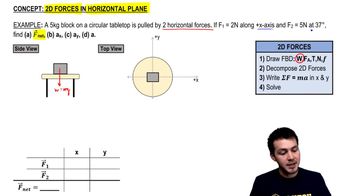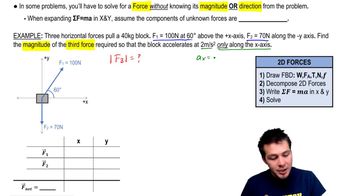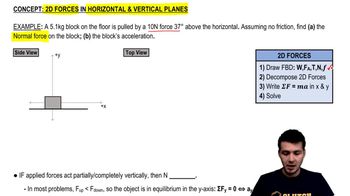Forces in 2D definitions Flashcards
 Back
BackForces in 2D definitions
1/15
Terms in this set (15)
- Vector AdditionA method to calculate net forces by combining vector components in two dimensions.
- Free Body DiagramA visual representation of all forces acting on an object, used to analyze force problems.
- Net ForceThe overall force acting on an object, calculated by summing all individual forces.
- EquilibriumA state where the sum of forces is zero, resulting in no acceleration.
- Normal ForceThe perpendicular force exerted by a surface to support the weight of an object.
- Trigonometric FunctionsMathematical functions like sine and cosine used to decompose forces into components.
- Pythagorean TheoremA formula used to calculate the magnitude of a vector from its components.
- ComponentsThe projections of a vector along the axes of a coordinate system.
- Horizontal PlaneA flat surface where forces act parallel to the ground.
- Vertical PlaneA flat surface where forces act perpendicular to the ground.
- Weight ForceThe force due to gravity acting on an object's mass, directed downward.
- Applied ForceAn external force acting on an object, often at an angle.
- AccelerationThe rate of change of velocity of an object, calculated using net force and mass.
- FrictionA force that opposes motion between two surfaces in contact, often ignored in ideal problems.
- Angle of ForceThe direction of a force relative to a reference axis, crucial for decomposition.



